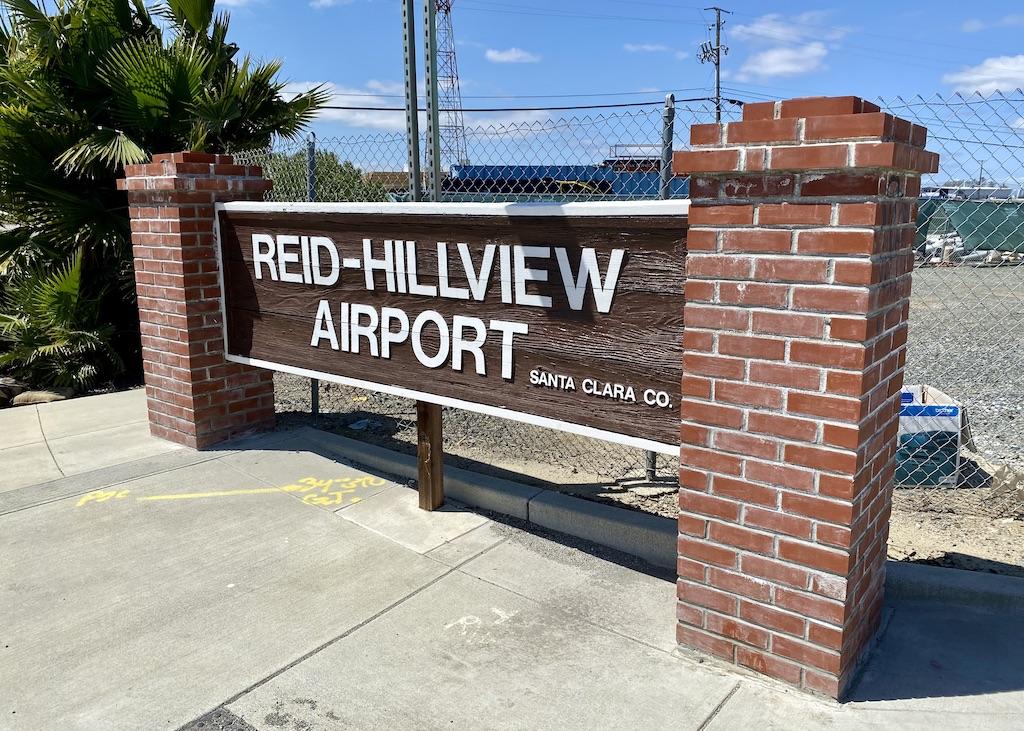This article is published in Aviation Week & Space Technology and is free to read until Apr 29, 2025. If you want to read more articles from this publication, please click the link to subscribe.

The AOPA challenged the phase-out of 100LL at Reid-Hillview Airport in San Jose.
The FAA has ruled that Santa Clara County, California, violated federal grant assurances when it stopped offering 100 Low Lead at two county-owned airports in 2022 and ordered it to reverse restrictions preventing use of the leaded aviation gasoline.
In a “Director’s Determination” dated March 24, the agency found in favor of the Aircraft Owners and Pilots Association (AOPA), which filed a formal complaint in October 2022 after county supervisors voted to transition to solely offering unleaded avgas at Reid-Hillview (RHV) and San Martin (E16) airports. The county later took control of fuel tanks it previously leased to fixed-based operators (FBO) at RHV to sell Swift UL94 and more recently GAMI G100UL unleaded avgas.
Santa Clara County claims that it acted to phase out the supply of 100LL after a study revealed a “clear causal link” between piston-engine aircraft burning leaded avgas and elevated blood-lead levels in children living near RHV in San Jose.
The AOPA in the complaint alleges the county violated federal grant assurances by denying reasonable access and prohibiting the sale and use of 100LL, which is needed for safe operation by aircraft with high-compression piston engines. The association says it represents at least 847 pilots and aircraft owners based at RHV and E16 who cannot purchase or self-fuel with 100LL at the two airports.
Between 1983 and 2011, the county received $6.8 million in federal airport development assistance, according to the FAA document. In addition, a majority of RHV airport property was purchased using Federal Aid to Airports or Airport Development Aid Program funds, it says.
County supervisors had voted in 2018 to stop accepting federal grants for the airport until FAA development grant assurances expire in 2031, potentially leading to its closure.
The 27-page ruling, signed by Michael Helvey, FAA director of the Office of Airport Compliance and Management Analysis, orders the county to provide a “corrective action plan” within 30 days explaining how it will remove restrictions on the purchase, storage, and use of FAA-authorized aviation fuels, including 100LL; allow self-fueling with 100LL by commercial service providers; and eliminate rules favoring one class of aircraft—those that can safely use UL94 and G100UL—to the detriment of aircraft that cannot.
Though the FAA conferred broad supplemental type certification (STC) approval for the use of 100-octane G100UL in piston-engine aircraft in September 2022, Helvey noted AOPA’s assertion that the fuel “is not yet in commercial production or distribution. It is without dispute that a significant number of FAA-certificated general aviation aircraft must continue to operate using 100LL at this time.”
The association further cited in motions “additional reasons why the availability of G100UL does not resolve the grant issues,” Helvey said.
“The general aviation industry wants to move toward unleaded fuels, but the issue in Santa Clara County is that the transition was forced upon pilots and businesses before many can use it,” said AOPA President and CEO Darren Pleasance, responding to the ruling.
“AOPA strongly supports the transition to unleaded fuels, while ensuring a continuous supply of 100LL until an acceptable alternative is available for all aircraft,” Pleasance added.
Consent Decree Ruling
In a separate, but related development, a California Superior Court judge in early March issued a temporary ruling denying an effort to compel several FBOs and fuel distributors in the state to supply high-octane G100UL in place of 100LL. The Center for Environmental Health (CEH), an Oakland-based environmental group, had asked the court to enforce a 2014 consent decree requiring the companies to provide avgas “with the lowest concentration of lead approved for aviation use that is commercially available.”
GAMI G100UL currently is the only high-octane unleaded avgas that has FAA STC approval for use across the broad range of piston-engine fixed-wing airplanes. But it has not gained wider industry acceptance by fuel distributors, FBOs, and engine and aircraft manufacturers because it lacks a production specification from standards organization ASTM, which would have subjected the formulation to peer review of its properties and performance.
The GA industry and the FAA have committed through the Eliminate Aviation Gasoline Lead Emissions initiative to phase out leaded avgas by 2030. In 2024 FAA reauthorization legislation, Congress requires federally funded airports to supply 100LL in the contiguous U.S. through 2030, and in Alaska through 2032, unless an approved unleaded alternative becomes available sooner.
Industry associations have asserted that compelling suppliers to offer G100UL now would be premature and risk-prone without more data.
In the temporary ruling, Alameda County Superior Court Judge Somnath Raj Chatterjee found that the CEH had not met the burden of demonstrating that G100UL is both “approved for aviation use” and “commercially available” as specified by the consent decree. “STC approval concerns a modification from the original design rather than a general approval,” Chatterjee stated.






Comments